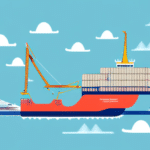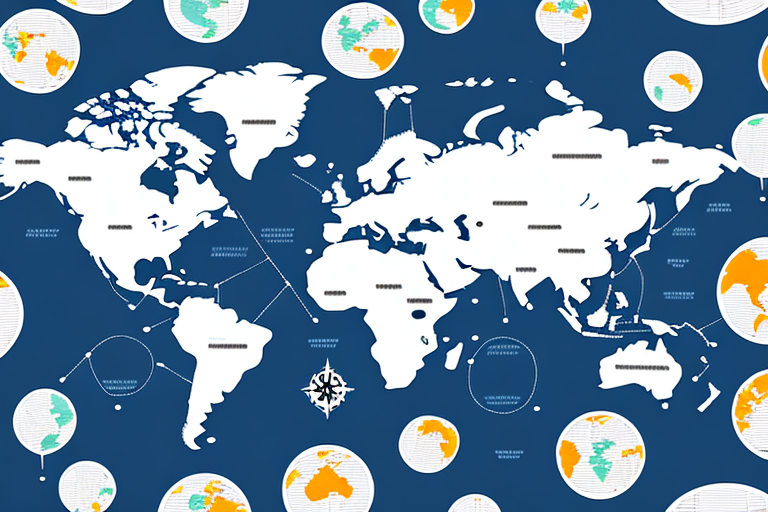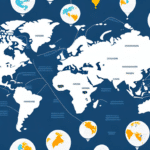Optimizing External Transit in Your Supply Chain: Tips for T1 Success
If you're looking to enhance your supply chain operations and streamline your external transit processes, optimizing your T1 strategy is an excellent starting point. This article delves into the significance of external transit within your overall supply chain strategy, the role of T1, common challenges, best practices, and future trends.
Understanding the Importance of External Transit in Your Supply Chain
External transit is pivotal to the success of your supply chain. Without efficient transportation from one location to another, your products cannot reach customers. Whether you're shipping raw materials, finished goods, or other products, effective management of external transit can improve efficiency, reduce costs, and enhance customer satisfaction.
Choosing the right transportation mode is a key factor in managing external transit. Depending on the product type, distance, and urgency, you may opt for air, sea, or land transportation. Each mode has its advantages and disadvantages, and selecting the most appropriate one can save you time and money. For instance, transporting perishable goods over long distances may be best achieved through air transportation due to its speed and reliability.
Another crucial aspect is tracking and monitoring. Leveraging technology allows you to track your shipments in real-time, from departure to arrival. This ensures timely delivery and helps identify potential issues or delays, enabling corrective action. Sharing this information with customers enhances transparency and builds trust in your supply chain.
The Role of T1 in Your External Transit Strategy
T1, or first-mile transportation, involves moving products from their origin (e.g., a warehouse or production facility) to the transportation hub for long-distance transport. T1 is foundational to your external transit strategy, setting the stage for the entire supply chain.
Efficient T1 transportation can reduce costs and improve delivery times. By optimizing routes and transportation modes used for T1, companies can minimize the time and resources required to move products from their origin to the transportation hub, thereby reducing overall transit time and associated costs.
Additionally, T1 transportation ensures the safety and security of products during transit. Proper packaging, handling, and tracking can prevent damage, loss, or theft, which is especially important for high-value or sensitive products like electronics or pharmaceuticals.
Common Challenges of External Transit and How to Overcome Them
External transit can present various challenges, including carrier capacity constraints, weather-related disruptions, and regulatory compliance issues. To overcome these challenges, develop contingency plans, establish clear communication channels with carriers, and leverage technology to track and manage logistics operations in real-time.
Unexpected delays caused by traffic congestion or accidents can ripple through the supply chain, leading to missed delivery deadlines and increased costs. Mitigate these delays by having a flexible transportation plan that allows for alternative routes and modes of transportation. Additionally, real-time visibility into shipment status can help identify potential delays early, allowing for proactive measures.
Developing a Comprehensive External Transit Plan
To optimize your external transit processes and achieve T1 success, develop a comprehensive plan that integrates with other supply chain processes. This plan should include clear performance metrics and defined goals to measure success and make necessary adjustments. Incorporate sustainability and social responsibility considerations into your external transit plan to align with modern business practices.
Utilizing transportation management systems (TMS) and other digital tools can streamline processes, improve visibility, and reduce costs. Incorporating real-time tracking and analytics provides valuable insights into transit operations, helping to identify areas for improvement.
Identifying the Right Carriers for Your Supply Chain
Selecting the right carriers is critical for T1 success. Assess carriers based on factors such as reliability, cost-effectiveness, capacity, and regulatory compliance. Maintaining relationships with multiple carriers can mitigate risk and ensure reliable service.
Consider the geographic coverage of carriers. Depending on your business needs, you may require carriers that can transport goods across different regions or internationally. Evaluate carriers based on their ability to meet your specific transportation needs.
Technology is increasingly important in the transportation industry. Carriers utilizing advanced technologies like GPS tracking and real-time data analysis provide greater visibility and control over your supply chain. Consider their technological capabilities and how they can integrate with your systems.
Managing Relationships with Third-Party Logistics Providers (3PLs)
Working with third-party logistics providers (3PLs) can enhance the management of external transit, but it’s essential to develop strong relationships and ensure clear, consistent communication. Establish clear service-level agreements, regularly evaluate performance metrics, and provide feedback to your 3PL partners.
Ensure that 3PLs align with your company's values and goals, such as sustainability, ethical practices, and customer satisfaction. Partnering with a 3PL that shares your commitment can strengthen the partnership and enhance your brand reputation.
Stay updated with industry trends and innovations in logistics technology to identify new collaboration opportunities with your 3PL partners, improving overall supply chain efficiency.
Tips for Negotiating Better Rates with Carriers and 3PLs
Negotiating better rates with carriers and 3PLs can reduce costs and improve your bottom line. To negotiate effectively, understand carrier and 3PL pricing models and have a deep understanding of your own supply chain operations.
- Volume of Freight: Carriers and 3PLs often offer discounts for larger volumes. Consolidating shipments or increasing order quantities can help take advantage of these discounts.
- Contract Length: Longer contracts can result in lower rates, as carriers or 3PLs can plan their operations more efficiently with a guaranteed stream of business. However, ensure contracts have flexibility to adjust shipping needs if necessary.
Best Practices for Tracking External Transit Performance
Effective tracking and monitoring of external transit performance is essential for optimizing T1 processes. Achieve this through regular performance evaluations, tracking key performance indicators (KPIs), and leveraging technology solutions like transportation management systems (TMS).
Establish clear communication channels with transportation providers by setting expectations for performance metrics and regularly sharing data and feedback. Collaborative efforts can identify improvement areas and implement mutually beneficial solutions.
Regularly review and update performance metrics to ensure they remain relevant and aligned with your goals, allowing you to focus on the most impactful data and avoid tracking irrelevant information.
Leveraging Technology to Streamline External Transit Operations
Technology can streamline external transit operations, enhance visibility and control, and improve collaboration among supply chain partners. Tools such as TMS, warehouse management systems (WMS), and transportation analytics solutions aid in managing logistics operations effectively.
Real-time shipment tracking through GPS and advanced technologies improves visibility and control, enabling proactive issue resolution during transit, such as delays or route changes. Automation of manual processes reduces errors and enhances overall efficiency.
Integrating External Transit with Other Supply Chain Processes
Effective external transit management is closely linked with other supply chain processes like inventory management, production planning, and customer service. Integration of external transit with these processes can enhance efficiency, reduce costs, and improve customer satisfaction.
- Inventory Management: Ensure timely product delivery to the right location, reducing the risk of stockouts and overstocking.
- Production Planning: Optimize transportation routes and schedules to minimize lead times and improve on-time delivery.
- Customer Service: Provide real-time delivery status updates and proactively address issues, enhancing overall customer satisfaction.
Measuring the Success of Your External Transit Strategy
Measuring the success of your external transit strategy is crucial for making data-driven decisions and continuously improving your supply chain operations. Key metrics include:
- On-time delivery rates
- Transportation costs
- Transit time
- Cargo damage rates
- Customer satisfaction
Anticipating and Adapting to Changes in the Transportation Industry
The transportation industry is continuously evolving, and it's essential to anticipate and adapt to changes to remain competitive. This may involve embracing new technologies, exploring alternative transportation modes, and staying updated with regulatory compliance requirements.
Future Trends and Innovations in External Transit Optimization
The future of external transit optimization is likely to be influenced by technological innovations such as autonomous vehicles, blockchain, and artificial intelligence. These technologies have the potential to improve efficiency and reduce costs throughout the supply chain.
Case Studies: Successful Examples of Optimizing External Transit in Supply Chains
Examining case studies of successful external transit optimization can provide valuable insights and ideas for improving your own T1 processes. Studying the best practices and success stories of other organizations helps in identifying effective strategies and innovations.
In conclusion, optimizing external transit through effective T1 management is a critical factor in achieving supply chain success. By understanding the importance of external transit, identifying the right carriers, leveraging technology, and measuring performance, you can achieve T1 success and enhance the overall efficiency and profitability of your supply chain.




















